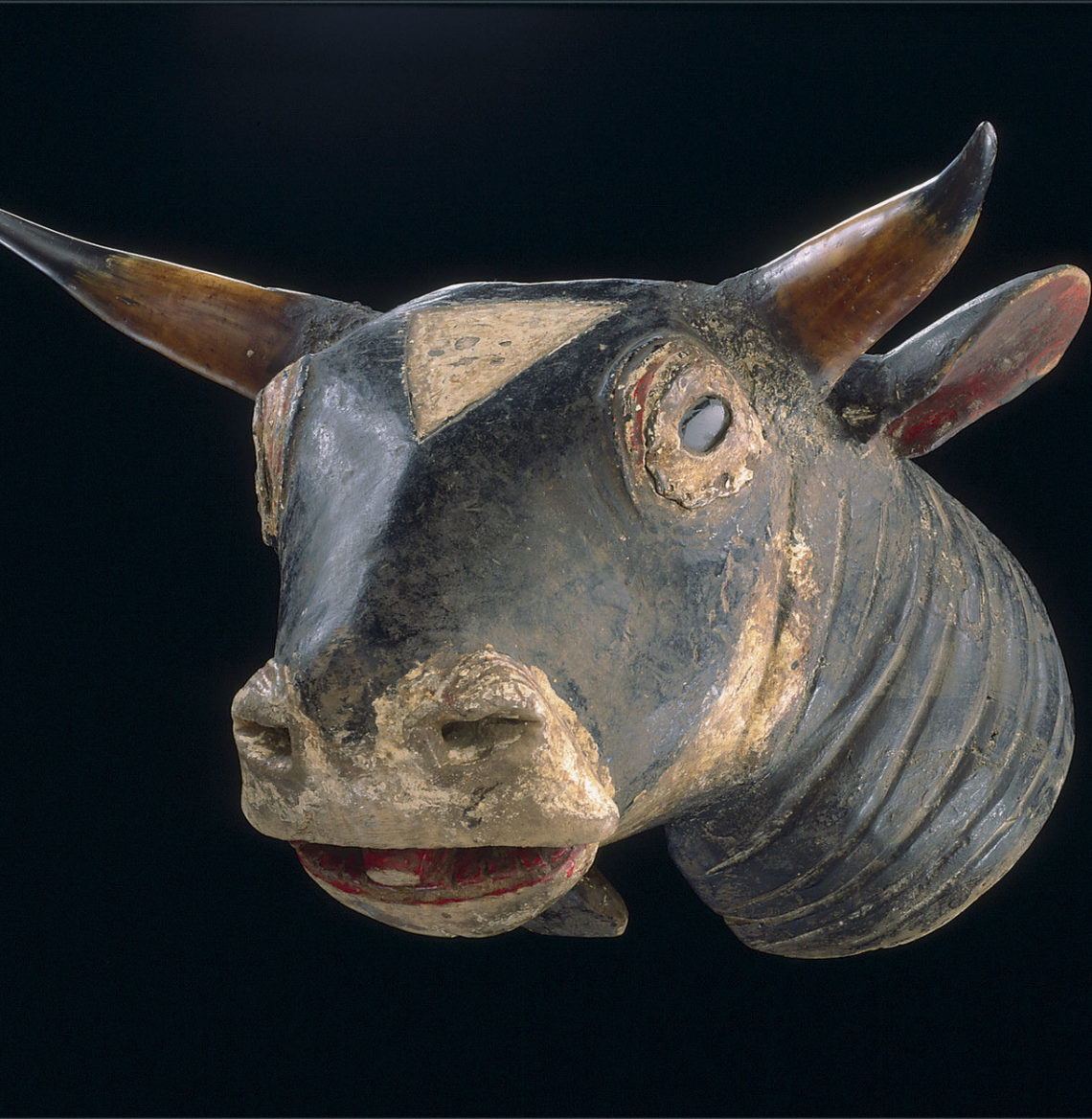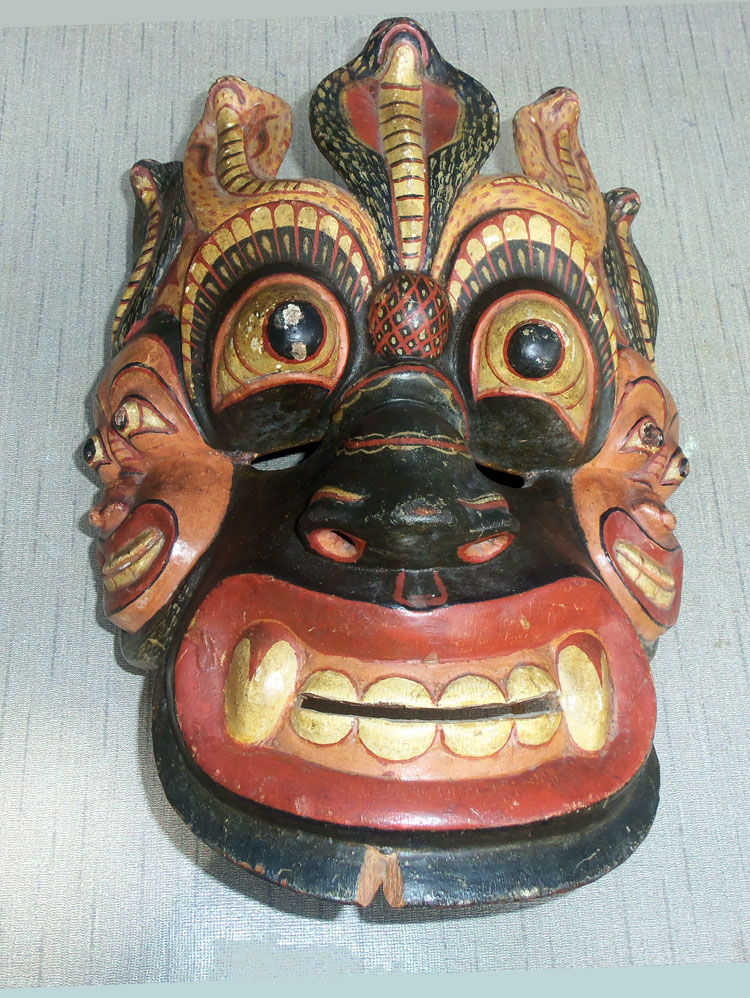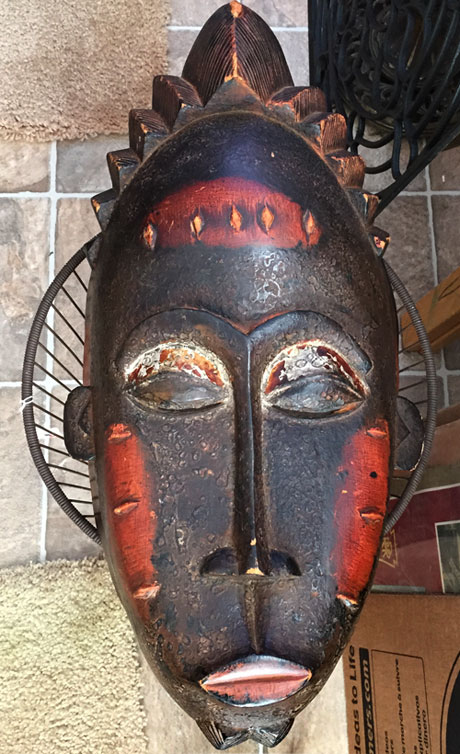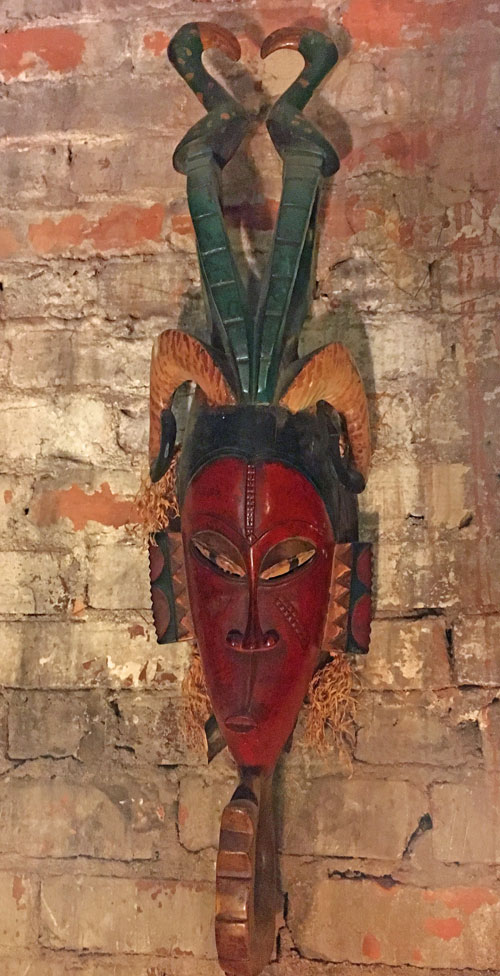 The Bidjogo people make four versions of the bull mask which they still use today. Here is an excellent description of these realistic masks. Skip to paragraph 3 if you aren’t interested in their history.
The Bidjogo people make four versions of the bull mask which they still use today. Here is an excellent description of these realistic masks. Skip to paragraph 3 if you aren’t interested in their history.
The historical significance of the ox for the Bidjogo peoples dates back to European encounters of the late fifteenth century, when Portuguese sailors introduced the animal to the Bissagos Islands in what is current day Guinea Bissau. Its prominent role gained momentum during the sixteenth and seventeenth centuries when warring villages stole stock from one another and foreign traders borrowed cattle on credit, all against the backdrop of a thriving slave trade that exacerbated existing social and political tensions. These tensions erupted in the mid-nineteenth century when French sailors refused to repay an important debt: the Bidjogo imprisoned them and France retaliated by attacking the inhabitants of Caravela, burning nearly all of its villages to the ground. Despite a strong resistance by the Bidjogo, the French eventually forced the deposed king to sign a treaty. Later in the century, Portugal colonized the region and in 1974 Guinea Bissau became an independent African republic.
Manratche, or initiation of Bidjogo youth within a hierarchical age-grade system, is one of the key illustrations of cattle’s vital role in the Bissagos Islands historically and today. In cabaro, a mid-level-age group that lasts ten years, male initiates celebrate the wild nature of post-adolescent life by donning a bull mask and imitating the animal’s aggressive behavior. A high infant mortality rate in the region means that young men do not always reach the cabaro age group. In these cases, young women may complete the initiation on their behalf. Initiation masks are crucial to the life-long goal of achieving the status of ancestor because the uninitiated are prohibited from creating objects of religious worship used for entering Ancaredo, an afterworld where the deceased becomes one with the Creator.
This example from the UIMA collections, which has a white triangle at the center of its upper brow area, is called dugn’be or ‘the ox raised in the village’ and represents one of four types of carved wooden bull masks found throughout the Archipelago. It features real cow horns and glass disc eyes in addition to an upwardly pointed tongue the carver added to further suggest the concentration of wild energy captured during performances. Dancers wear this highly naturalistic mask over their heads along with a cylindrical “neck” (carved separately) that is attached by rope and rests on their shoulders. The full costume commonly includes a fiber skirt, belts, bells, and arm guards. In performance, male attendants hold a single rope strung through the nose of the mask to tame its beastly spirit. After their initiation is complete, performers often abandon these masks.
-Cory Gundlach, 2015





